×
Save 20% On Your Purchase!
Use code SAVE20 at checkout to save on your purchase today from my Herbal Shop!
×
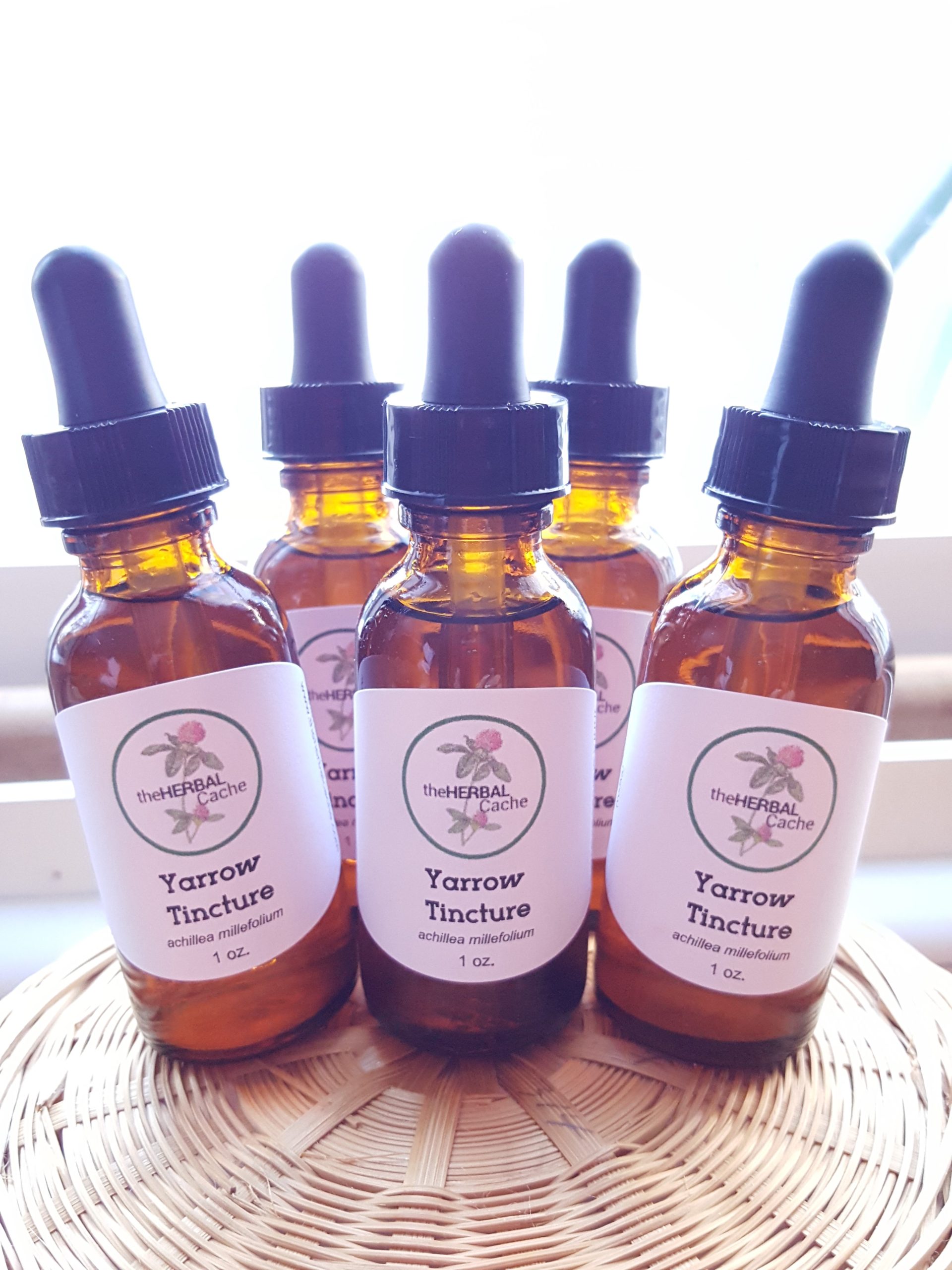
Yarrow is one of the world’s oldest medicinal plants and has been used for centuries. It was found among other medicinal herbs in a Neanderthal burial site in Iraq, which dates from around 60,000 BC.
Throughout history, it has been used for treating wounds, hence its common names “soldiers’ woundwort” and “staunchweed”.
Achillea millefollum
The genus, Achillea, was named after the Greek hero, Achilles, who used plant extracts to treat soldiers’ wounds in the battle of Troy. Millefolium means “a thousand leaves”.
The most common and well known use for yarrow is healing wounds. It also helps to control the bleeding of lacerations, puncture wounds, and abrasions.
Because of yarrow’s anti-inflammatory and antiseptic oils, astringent tannins and resins, it possesses excellent wound healing qualities. It also contains silica, which will help in repairing damaged tissue.
Achillea millefollum has antibacterial and antimicrobial so it will help in preventing any infection from setting in.
Make yarrow a staple in your first-aid kit. You never know when it will come in handy.
Yarrow is considered a bitter, which makes it a great partner for digestion. This in turn helps the body absorb more nutrients. It also helps with poor appetite due to low digestive secretions and general inflammation that makes tissues not function well. It has a slight affinity for the gallbladder and liver.
This plant can also help if you get food poisoning, by getting the toxins out of your system.
Yarrow has been used throughout history in relation to blood. It both activates blood platelets and breaks up coagulated blood. By thinning the blood, it moves congestion in the portal vein, the pancreas and the lungs.
It also stimulates the bone marrow and increases white blood cell production.
Achillea millefollum may also lower blood pressure by moving blood to the skin and easing the burden on the heart.
Yarrow is an astringent, and because of that, it is wonderful for varicose and spider veins. It astringent properties help tighten and tone the walls of the veins. This is the key ingredient in my ever popular varicose vein cream. Check out my blog post on varicose veins to learn more.
Place some crushed leaves up against the aching tooth and it will help relieve the pain.
Yarrow is used to protect the skin from excessive sun or wind. It can also help to clear up skin acne.
The astringent properties make it a go-to herb when one is hit with diarrhea.
Because it is a diuretic, yarrow promotes urine production and flow, which helps let out excessive fluids and toxins through enhanced urination.
The diaphoretic actions of yarrow can help move toxins out of the body through sweating, which helps the body to break fevers. By relaxing the skin, it will open the pores to allow copious sweating and the release of toxins.
Yarrow fights infection, helps with nausea, stimulates sweating, and lowers fever. Through thinning the blood and increasing circulation, it also helps congested people breath better. A classic cold and flu remedy is a combination of yarrow, peppermint and elderflower drunk hot.
Yarrow has been used successfully to treat asthma attacks through thinning the blood and increasing blood flow in the lungs.
If you ever get a nosebleed, all you have to do is pick a few fresh leaves and rub them between your hands to bruise them, releasing the aromatic oil. Roll the leaves into a nasal plug, insert into the affected nostril and leave until the bleeding completely stops before gently removing the plug.
But beware – yarrow can also cause nosebleeds as well. It is one of those plants that can cause what it cures. Hence, one of its nicknames is “nosebleed”.
Menstrual Cycle
Yarrow contains sterols, which have actions similar to hormones, and aid in balancing the menstrual cycle. So it is applicable in both extremely heavy or very scanty (and absent) menstruation. It may also be used externally as a sitz bath for painful cramping during menstruation.
In Sweden, they sometimes use yarrow in place of hops when brewing beer. It is said to be more intoxicating that way.
Yarrow has many uses in the garden. It’s small, delicate flowers are wonderful for bringing in bees and butterflies.
Yarrow is a great companion plant. It’s root secretions strengthen and protect nearby plants and help them become more disease resistant.
The roots of the yarrow plant bind loose soil together, thus helping prevent erosion.
Every garden should contain at least a clump of yarrow to help maintain a healthy ecosystem.
Many of the superstitions and incantations that involve Yarrow are focused on finding one’s partner. Many traditions suggest that the seeker, mainly young girls, would sew an ounce of Yarrow in a piece of their clothing or place it under their pillow before going to sleep.
“Good morrow, good morrow,
To thee, braw yarrow,
And thrice good morrow to thee;
I pray thee tell me today or tomorrow
Who is my true love to be.”
Yarrow is viewed by some as having a protective quality from “bad vibes” or that feeling of “everyone is against me”.
By using it as a flower essence or having the actual plant, it can help protect one from the negative outside influences one may have.
I wildcraft my yarrow in central Minnesota and make tinctures. They are available for purchase HERE.
https://wildfoodsandmedicines.com
All photos are the property of theHERBAL Cache, unless otherwise noted.
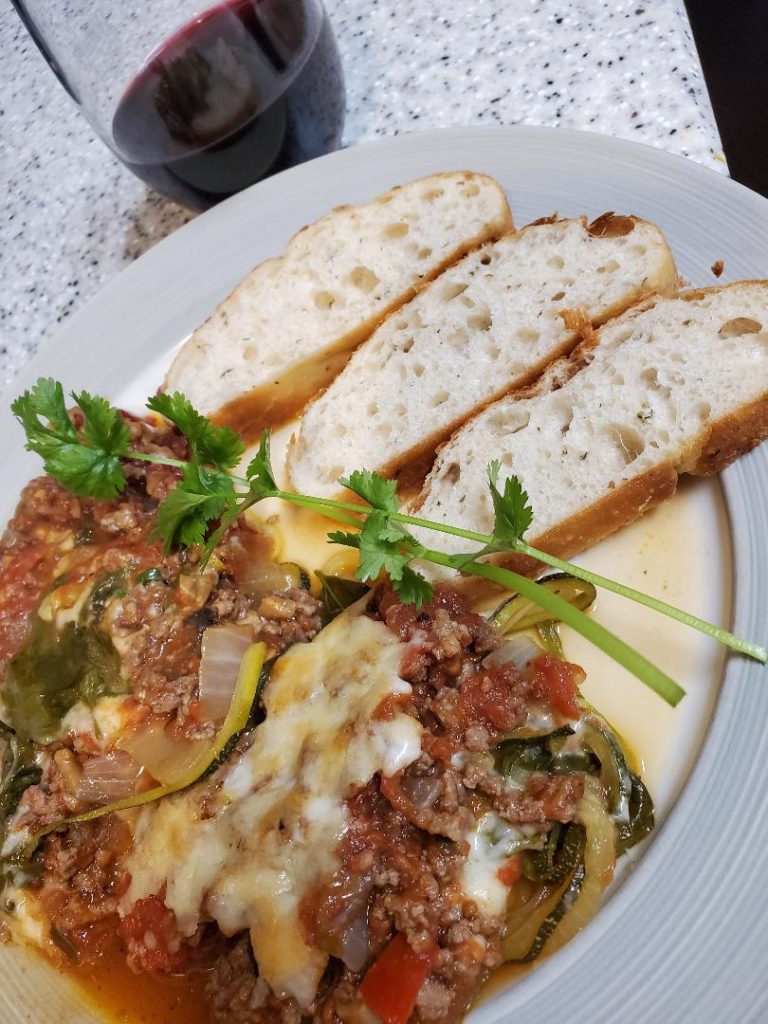
I’m the type of person who doesn’t like to waste anything I don’t have to. So when I saw all the lambs quarters in my mom’s garden that she wanted pulled out, I knew I had to step in and utilize them.
Now my mother tends a very large garden, and always has. With the help from a few of my siblings, we help plant and take care of it through the summer. Then in the fall we all benefit from our labor of love with some wonderful vegetables. This is a wonderful time for us to bond as siblings and family as well.
It is always fun to think ahead to the harvesting and canning of the delicious vegetables. Some of our favorites are making salsa with all the tomatoes and peppers and booyah, which utilizes just about every vegetable from the garden, with the addition of chicken.
Right now we are in the middle of summer and working on maintaining the garden, such as watering and weeding. Yes, I said weeding. But not just any weeding.
In this garden are many “weeds” (according to my mother), such as lambs quarters and amaranth. So instead of just pulling and tossing the weeds, I collect them. This time I collected lambs quarters for eating.
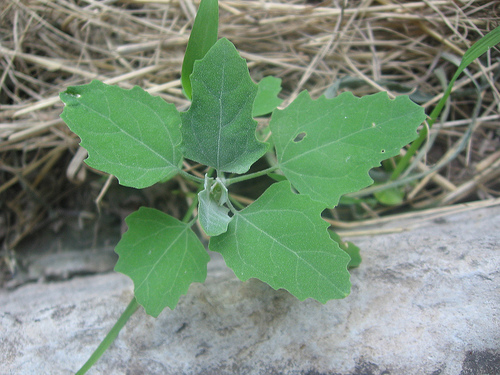
Lambs quarters, also known as wild spinach, is very nutritious and can be eaten like any other green. It is one of the most common weeds you will find in gardens and backyards.
So you definitely don’t want to toss out such a plant! Well, I least I don’t.
I took the lambs quarters I collected and created a casserole dish that is absolutely divine! And I wanted to share it with you so you can enjoy this wonderful plant too.
So the first thing you will need to do is to gather about 5-6 cups of lambs quarters leaves. If you have little ones, this would be a great way to have them help you out. They can help pick leaves for you! Once picked, rinse them and let drain.
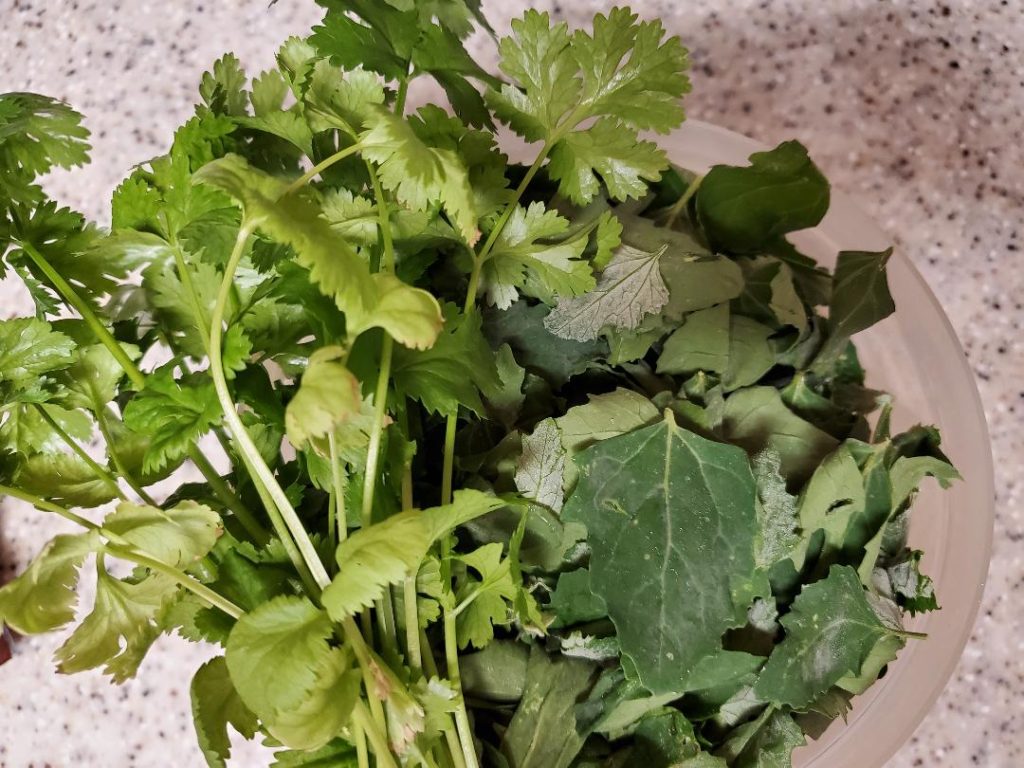
Then, over medium heat, brown the ground beef in a fry pan. I add in the onions and mushrooms when the hamburger is almost done browning. Once the onions are translucent, drain off any excess grease.
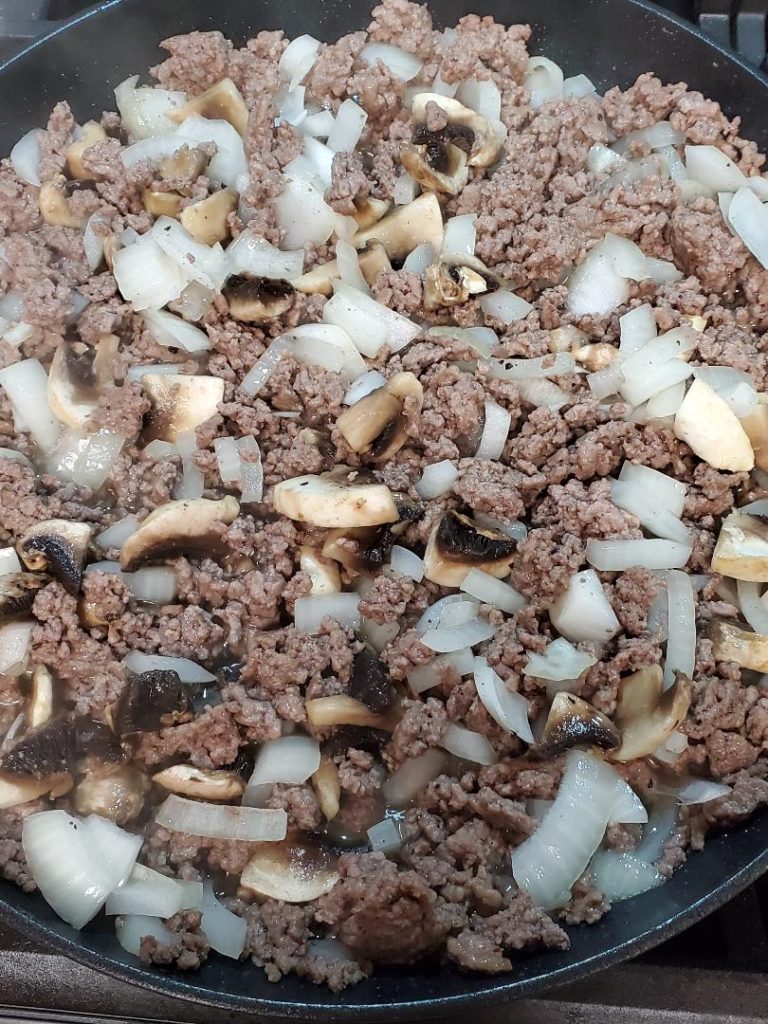
While the ground beef or hamburger is browning, you can prepare the zucchini. I like to spiralize mine. You can either buy it spiralized, or buy whole zucchini and do it yourself. I like this spiralizer. It is simple to use and cleans up nicely.
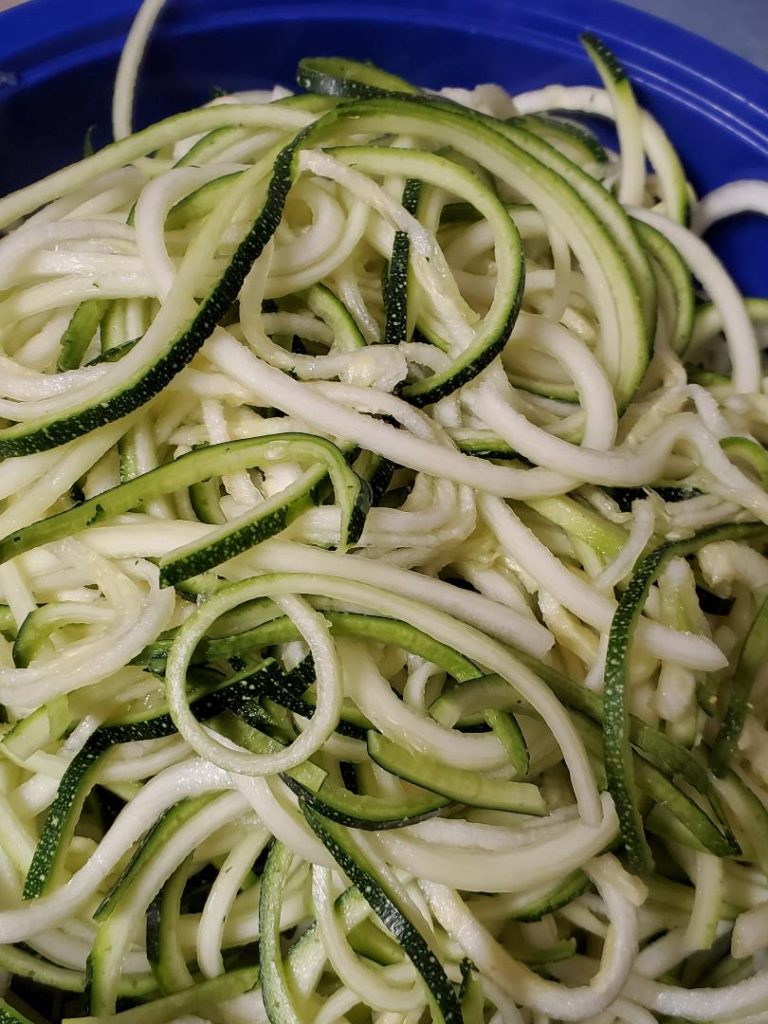
Now you can start pre-heating your oven to 350 degrees.
Once you have the ground beef browned and the zucchini prepped, it is now time to put your casserole together.
Get out a glass casserole dish or cake pan. Spread a couple scoops of spaghetti sauce on the bottom to help prevent the other ingredients from burning to the bottom. Then start layering the zucchini, ground beef, lambs quarters, cilantro, cheese and sauce.
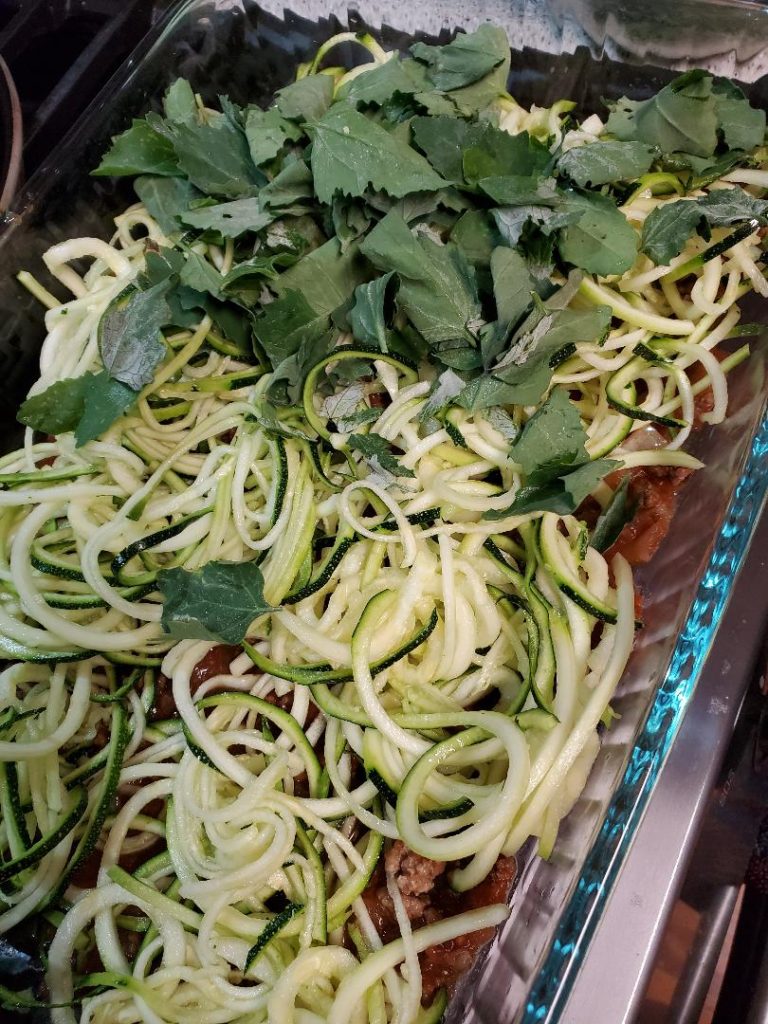
Keep layering till all ingredients are gone. Top the dish off with cheese. You can use more or less cheese, however much you prefer. I usually end up with about 2 layers of each ingredient before the pan is full.

Once the oven is pre-heated to 350 degrees, put the casserole in the oven to bake for about 30-45 minutes, or until the cheese is starting to turn brown.
I serve this with some garlic bread and a side salad. It is a very nice way to enjoy an Italian style dish without the pasta and carbs.
And of course, I have to have a nice glass of red wine to accommodate the meal.
I hope you enjoy this simple and nutritious dish as much as I had fun creating it.
Bon appetit!
[recipe title=”Lambs Quarters and Zucchini Casserole” servings=”6-8″ preptime=”30 mins” cooktime=”30-45 mins” difficulty=”easy” rating=”★★★★★” image=”https://www.theherbalcache.com/wp-content/uploads/2020/06/out-of-the-oven.jpg” description=”A healthy take on lasagna without the pasta.”]
[recipe-notes]
Credit: theherbalcache.com
[/recipe-notes][recipe-ingredients]
– 1.5 lbs ground beef
– 1 medium chopped onion
– 1/2 cup mushrooms
– 2 zucchini, spiralized
– 5-6 c. fresh lambs quarters
– 1 c. chopped cilantro
– 1 jar spaghetti sauce (I like to use my homemade sauce)
– 3 c. mozzarella cheese
[/recipe-ingredients][recipe-directions]
1. Brown the ground beef; add the onion and mushrooms and cook until onions are translucent.
2. Layer the hamburger mixture, zucchini, lambs quarters, cilantro, cheese and sauce. Add another layer of cheese on top.
3. Bake at 350 degrees for about 45 minutes or until cheese starts to brown up.
[/recipe-directions][/recipe]
I love seeing virginia waterleaf coming up because I know that spring is here and winter is behind me. Here in central Minnesota, it is one of the first spring ephemeral plants to emerge from the cold ground. Sam Thayer calls it an “optional ephemeral” because it is abundant in the spring, but becomes sparse in the summer months.
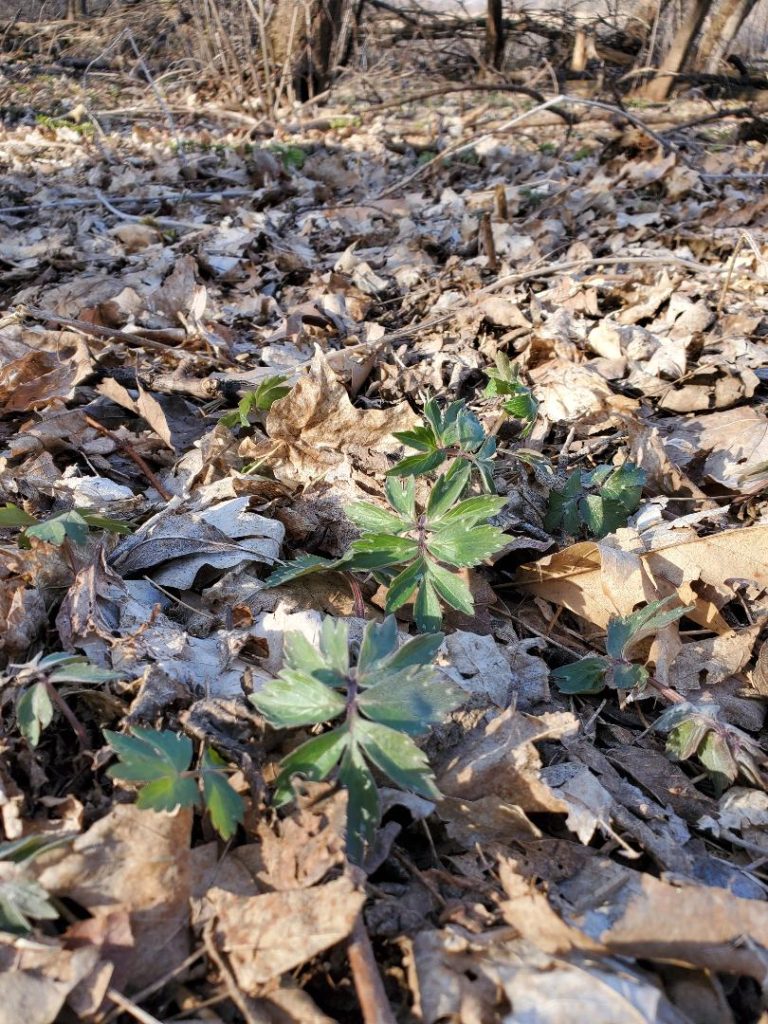
Virginia Waterleaf emerging from under the dead leaves in early April.
Hydrophyllum virginianum
The generic name, Hydrophyllum, is Greek for “water leaf”. Hydro is from hudor or hydor, which is “water”, and phyllum is from phullon or phyllon, which is “leaf”. This name also refers to its wetland habitats. The specific epithet, virginianum, is Latin for “of Virginia”, where it was first studied.
You can easily identify virginia waterleaf in the spring because of the distinctly spotted leaves, giving it the appearance that it is stained by water drops. Virginia waterleaf is one of the most prolific varieties, and it flourishes far past Virginia into areas such as Minnesota.
Virginia waterleaf is a herbaceous perennial in early summer. It can be found mainly east of the Mississippi River, but it has western cousins, the California waterleaf (Hydrophyllum occidentale) and the Pacific waterleaf (Hydrophyllum tenuipes).
Although this plant is fairly competitive with other plants, there are some areas, such as New Hampshire in which this is becoming endangered.
Bees and white-tailed deer love this plant for gathering nectar and eating.
Other common names for this species are Brook Flower, Burr Flower, Eastern Waterleaf, Indian Salad, John’s Cabbage, Shawanese Lettuce, Shawnee Lettuce, Shawnee Salad, Virginian Waterleaf, and Waterleaf.
Virginia waterleaf can be found growing in wet, wooded areas. It prefers shade. It likes a a moist humus-rich soil. Slugs are particularly fond of this plant and will soon destroy it if given a chance
The plant grows in a clump like format with limited spread. The root pattern is rhizomatous with underground stems sending roots and shoots along their length. The clumps can easily be propagated in the spring.
This plant is considered a nice groundcover by many gardeners.
In early spring, Virginia waterleaf can be easily identified by the spots on the leaves, appearing to be waterdrops, hence the name. The leaves are deeply lobed, with jagged edges, and get darker as the plant matures.
It flowers in May to early June and seeds in July and August, lasting 3-4 weeks. The flowers form in dense clusters and are are white to dark violet in color.
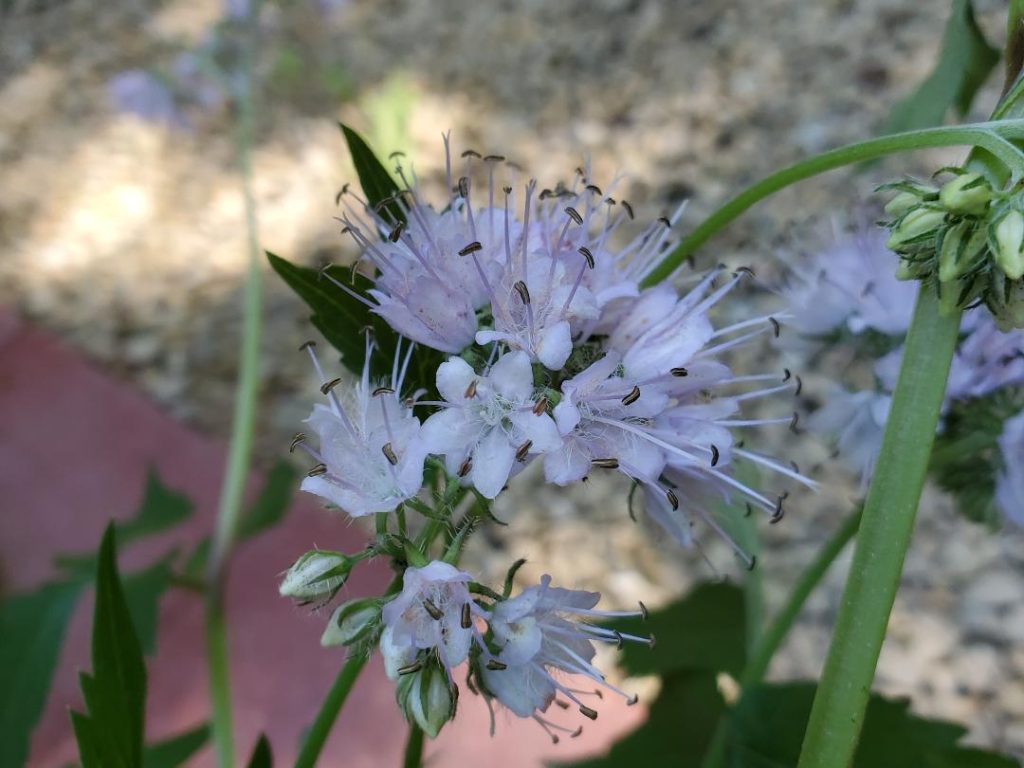
The leaves are alternate with the stems being slightly jointed. The stem is covered with dense, stiff hairs. Where the plant divides, the stem is more red or purple in color. The plants get about 2 feet tall.
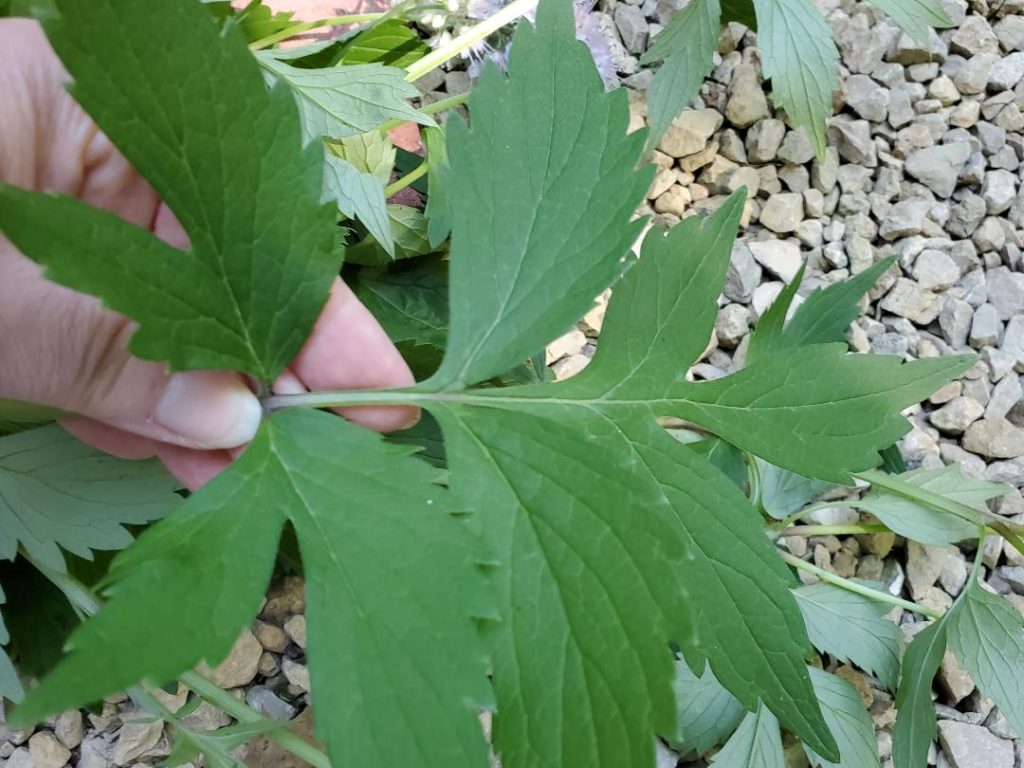
Both the Native Americans and the early European settlers used this plant.
Known also as Indian Salad, the leaves taste a bit like parsley and are good in salads this time of year or in soups as a potherb. The leaves are also good fried in fat or oil when they are tougher.
The leaves can be eaten when young. They have a rather bland taste and are a nice addition to any leafy salad. The leaves do have a slightly fuzzy texture, but when mixed with other greens, you don’t notice it. The older leaves can be eaten as well, and are more like spinach. According to Sam Thayer, they are to be eaten like most greens, used as a side dish or snack, not a main dish.
The flowers and flower buds can be eaten. Add them to a salad for decoration and to eat! The buds are similar to the raabs of garlic mustard and bittercress. Mix them with the leaves and some other greens and they make a fun, textural addition to the salad.
The leaves and flowers can be eaten raw or cooked. When cooking, it is recommended to boil twice with fresh water to remove some of the bitterness. The cooked leaves and shoots can be served with salt, pepper, butter, or vinegar. The leaves and shoots are best eaten before the flowers emerge.
Some Native American tribes fed the roots to their ponies to fatten them and to shine up their hair.
Minnesota herbalist Matthew Alfs says virginia waterleaf is a first-rate astringent and sadly ignored by herbalists. He says it is his go-to remedy for those with oral sores.
A tea made from the roots as an astringent, can be used in the treatment of diarrhea, dysentery etc. A decoction, or the chewed root, has been used as a wash for cracked lips and sore mouths.
Historically, it was used for pain. The Menominee used the roots for chest pain and the Ojibwe used it for back pain.
Using this plant in tea form is the most common usage, but it can also be made into a tincture. I prefer the tincture form because it has a longer shelf life.
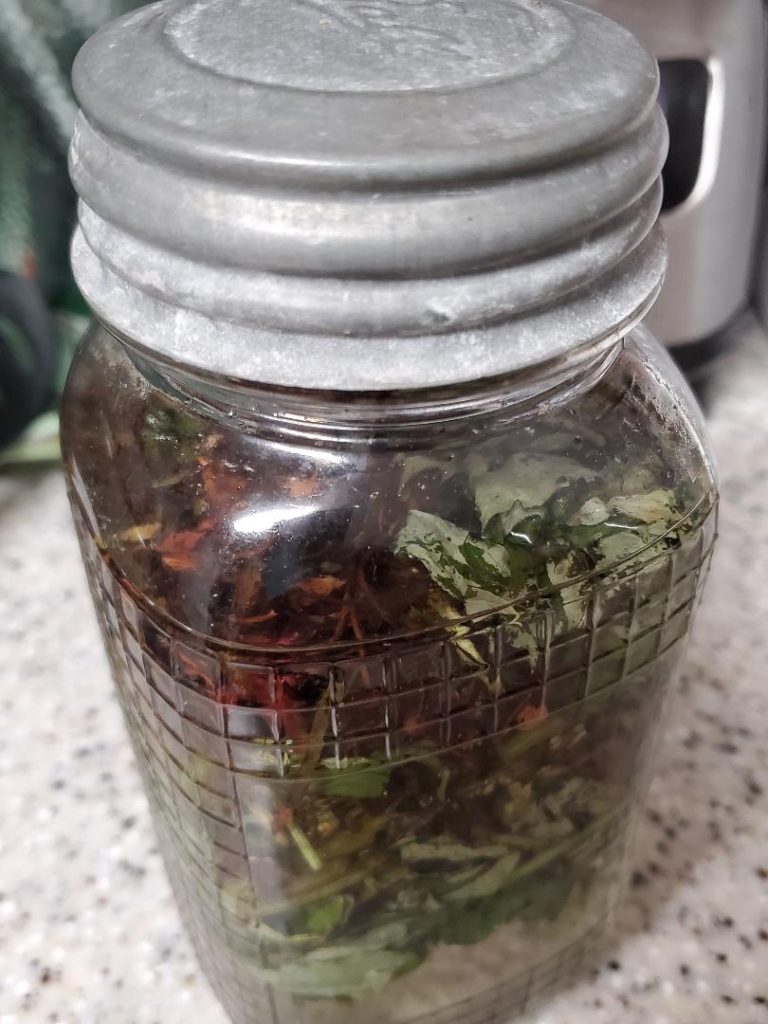
I use the entire plant to make a tincture. This way I get the whole plant’s synergy into my medicinal liquid extract.
I suggest you keep a watch for this hidden little gem of a plant. In the early spring, take a nibble on a leaf and see what you think. Or just admire the ornamental flowers sticking up above the stems. Either way, I think you’ll find that this plant has a personality all its own!
Thayer, Samual (2006). The Forager’s Harvest: A Guide to Identifying, Harvesting and Preparing Edible Wild Plants. Birchwood, WI: Forager’s Harvest
Alfs, Matthew (2013). Edible and Medicinal Wild Plants of the Midwest. New Brighton, MN: Old Theology Book House
http://www.naturalmedicinalherbs.net/herbs/h/hydrophyllum-virginianum=virginia-waterleaf.php
http://www.wildfoodies.org/EasternWaterleaf.htm
https://pfaf.org/user/Plant.aspx?LatinName=Hydrophyllum+virginianum
https://practicalplants.org/wiki/Hydrophyllum_virginianum
https://www.ediblewildfood.com/virginia-waterleaf.aspx
http://www.illinoiswildflowers.info/woodland/plants/va_waterleaf.htm
Glechoma hederacea
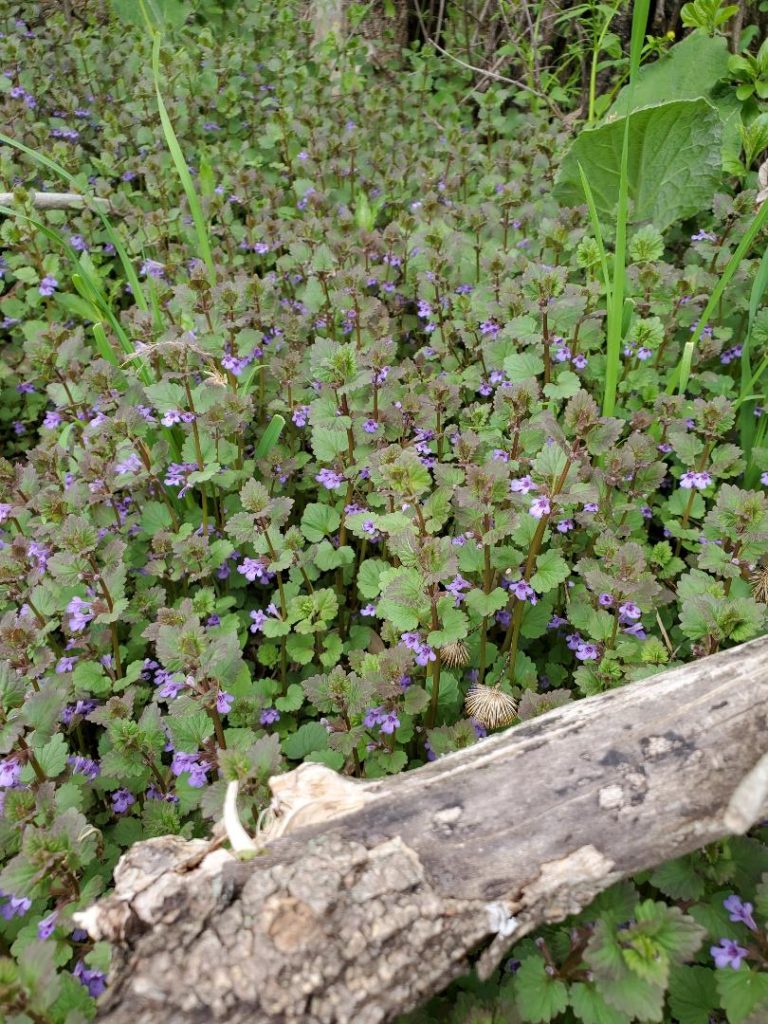
Creeping Charlie, also known as ground ivy, has had a bad rap for quite some time. Because it “creeps” up in lawns and yards, in places where it is not wanted, it has become a nuisance for many people. Once it is established, it is very hard to get rid of.
Creeping charlie is native to Europe. European settlers brought it to North America for plant medicine and as a ground cover. It grows rapidly from seeds and spreads via stolons (creeping stems). You can find it growing in moist, shady areas.
One of my herb mentors, Lise Wolff, said “Perhaps we should restore it to its original Latin name, Corona terrae; ‘Earth Crown,’ as it is truly like a garland over the ground.”
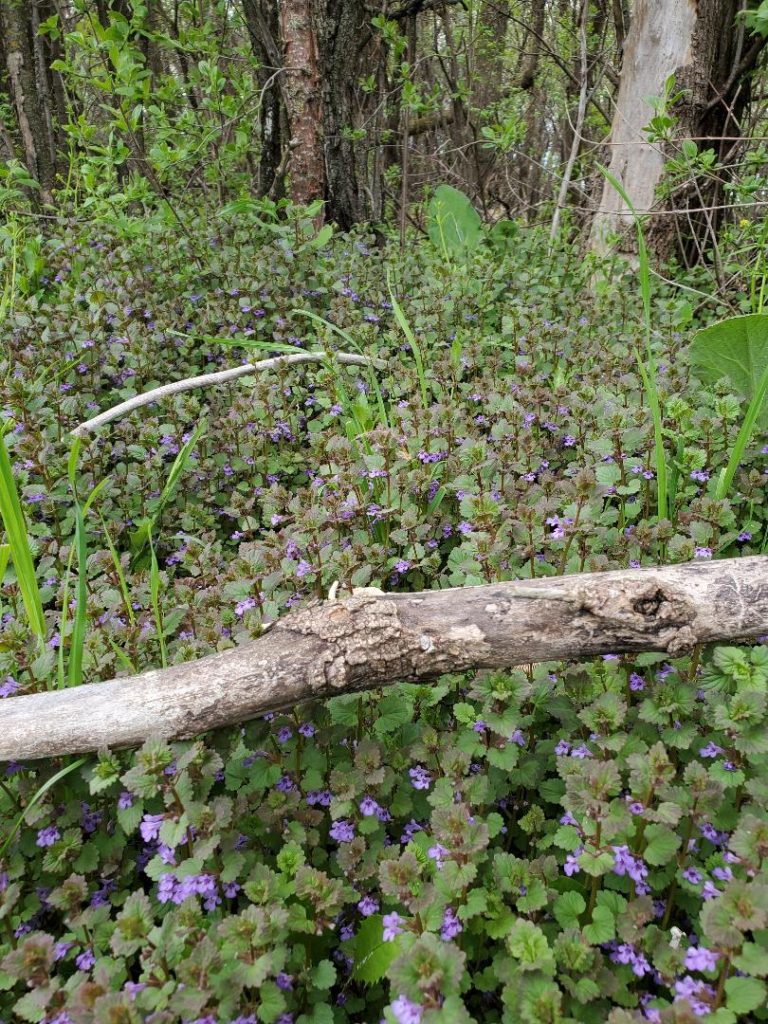
This plant is part of the mint (Lamiaceae) family. The leaves have a mint-like flavor and can be tossed into salads to add extra flavor. Create a seasoning salt to put on pastas or meat dishes.
Just like spinach, the leaves can be sauteed and added to omelets, soups, rice, etc. Pair them up with dandelions and make a wild salad! Use it for seasoning meats or vegetables. It can also be found in beer recipes – check this one out, Belgium Wild Beer!
The use of this plant dates back to the first century where it was considered a panacea (cure-all). The medicinal uses for Glechoma hederacea, or creeping charlie, are as extensive as the plant itself. The list includes congestive headaches, toothache, indigestion, bloating, gas, earaches, sore throats, bronchitis, chest colds and even depression.
It also has an affinity for ear issues, such as tinnitus. Matthew Wood tells of his use of ground ivy in a case of chronic bronchitis believed to have originated years before in a middle ear infection.
Creeping charlie is becoming more well known for its ability to draw out heavy metals. It has historically been used to help with “Painter’s colic,” a variety of lead poisoning resulting from constant exposure to leaded paints. A number of fellow herbalists use it for mercury poisoning that comes from cavity fillings.
Here is a video from Spiraea Herbs, “Charlie Ain’t All Bad“, that goes over more benefits of ground ivy, or creeping charlie.
I wildcraft creeping charlie and make a tincture out of it. This way I can store it for a long time and have it available when needed. I pick the top 75% of the plant and use the stems, leaves and flowers.
Creeping Charlie makes an excellent nectar for the bees and other pollinators, along with other spring flowers. Look closely and you’ll see the busy little bees!
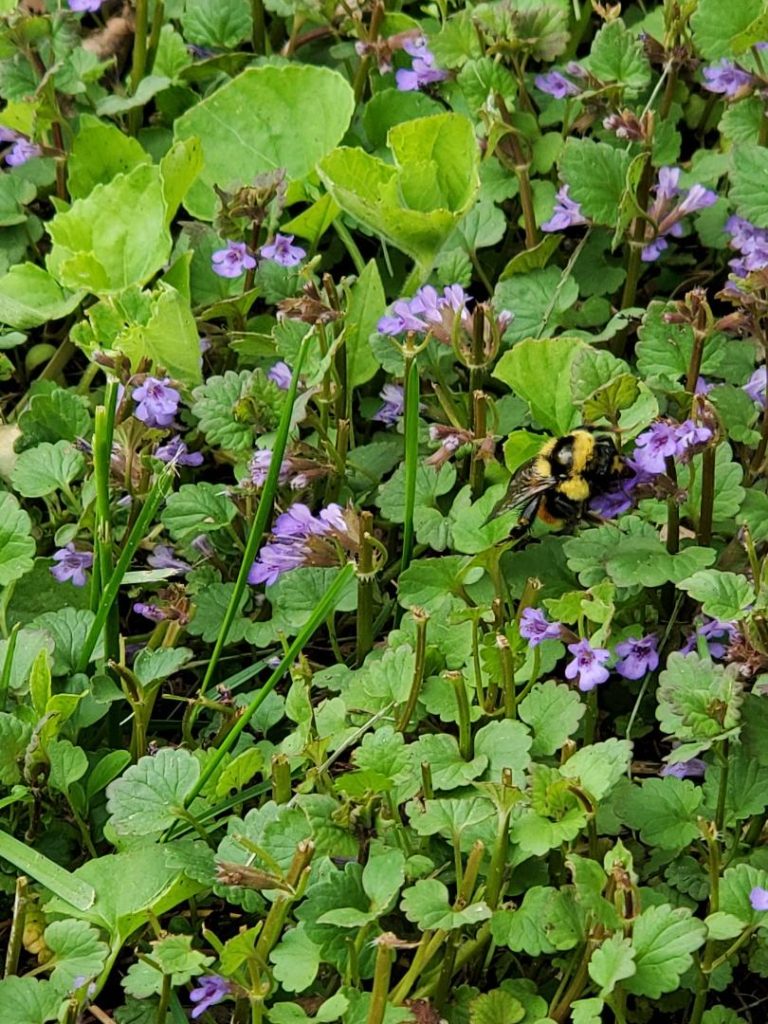
Motherwort may be just a weed to most, but it has many uses and benefits. Hidden among the other green plants, it thrives and flourishes. If you just look for it, you will find it. If you don’t see it, you’re not looking hard enough, as it can get to ten feet tall in places!
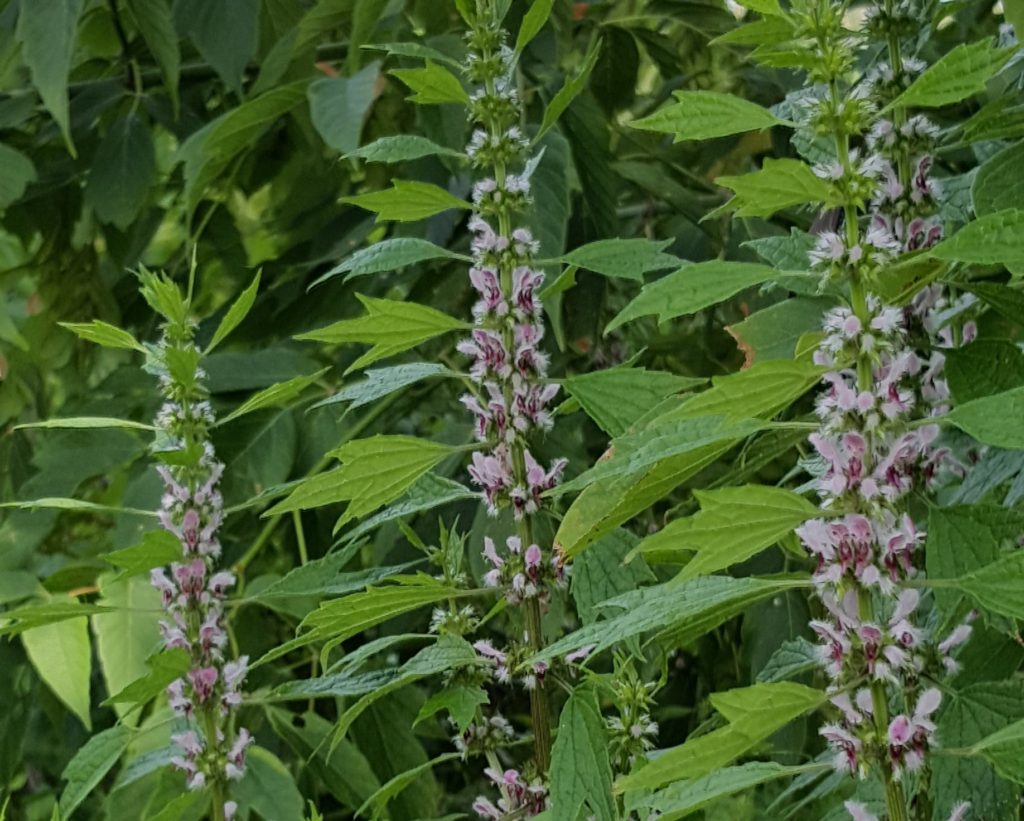
It’s botanical name is Leonurus cardiaca, says a lot right there. Leonurus meaning lion-hearted or of the lion. Motherwort is a strong and robust plant, thriving in most conditions. This most likely occurs, because it is in the mint family, making it hardy and easy to grow.
Cardiaca, of the heart, shows that motherwort has a large affinity for the cardiovascular system and has been used for centuries for that purpose.
The common name, motherwort, also has meaning. With wort meaning “herb”, we get “Mother’s Herb”. This makes it a wonderful remedy for those mothers with anxiety or high stress, and for those who may be worries about their own mother.
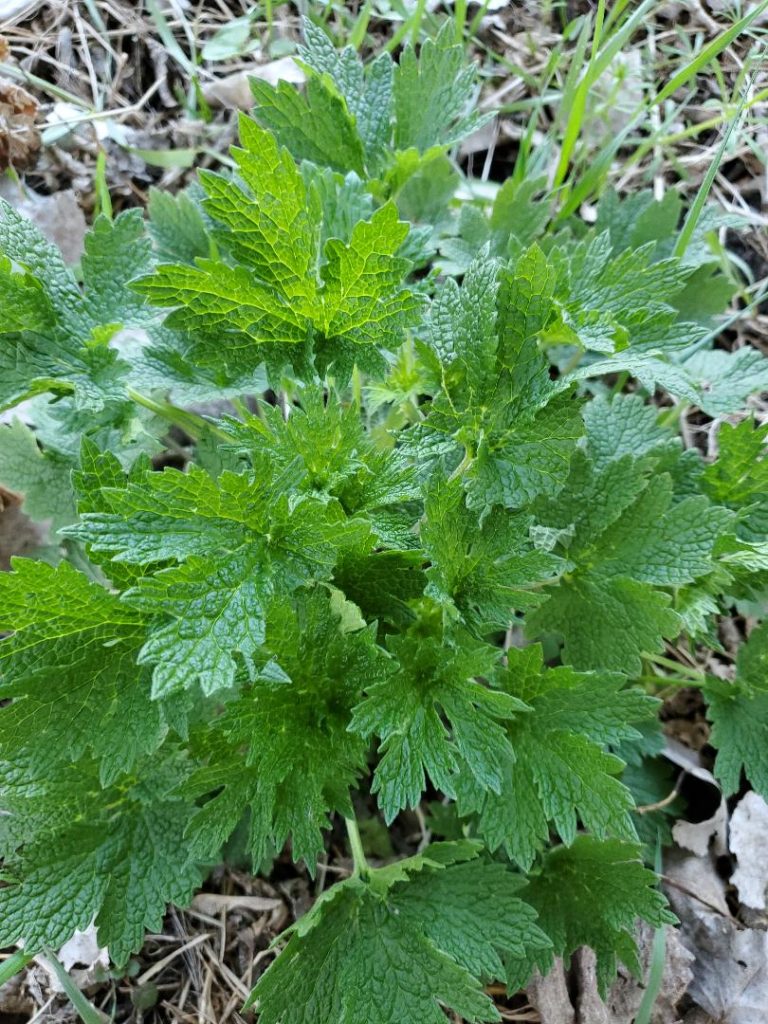
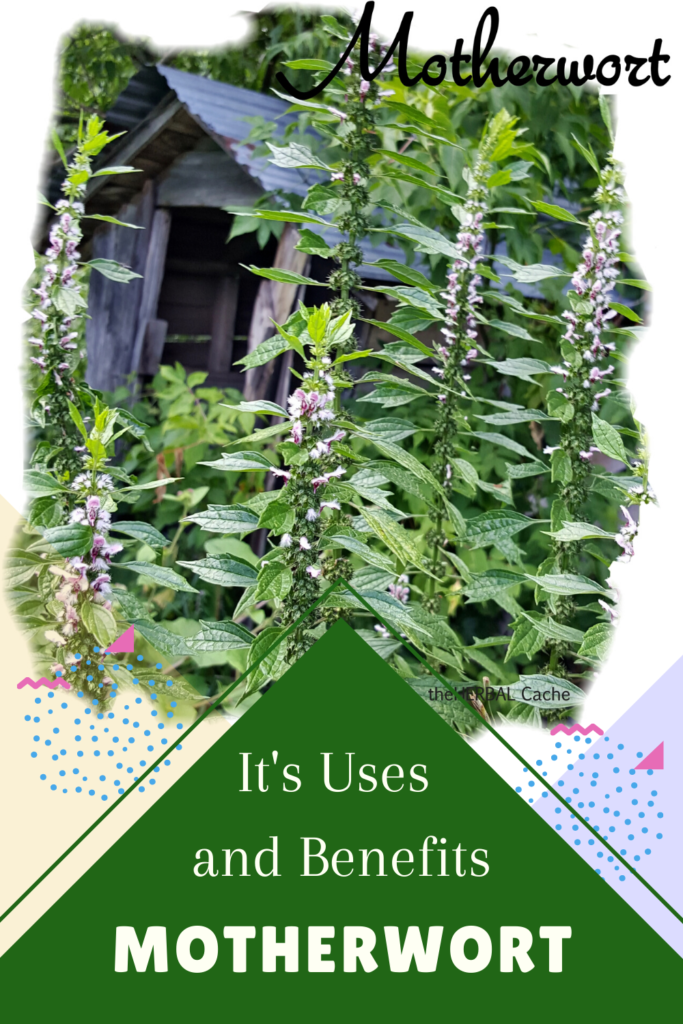
Motherwort is loaded with many vitamins and minerals, the reason it can help and support our bodies in so many ways.
Motherwort is wonderful for the heart and cardiovascular system. It seems to work even better when paired with a tincture of hawthorn. It may even help those with high blood pressure and heart palpitations.
It is also quite useful for all heart conditions associated with anxiety and tension.
On the emotional side, motherwort may even help with heartache. Use in conjunction with linden or lemon balm to help lift one’s mood and spirits.
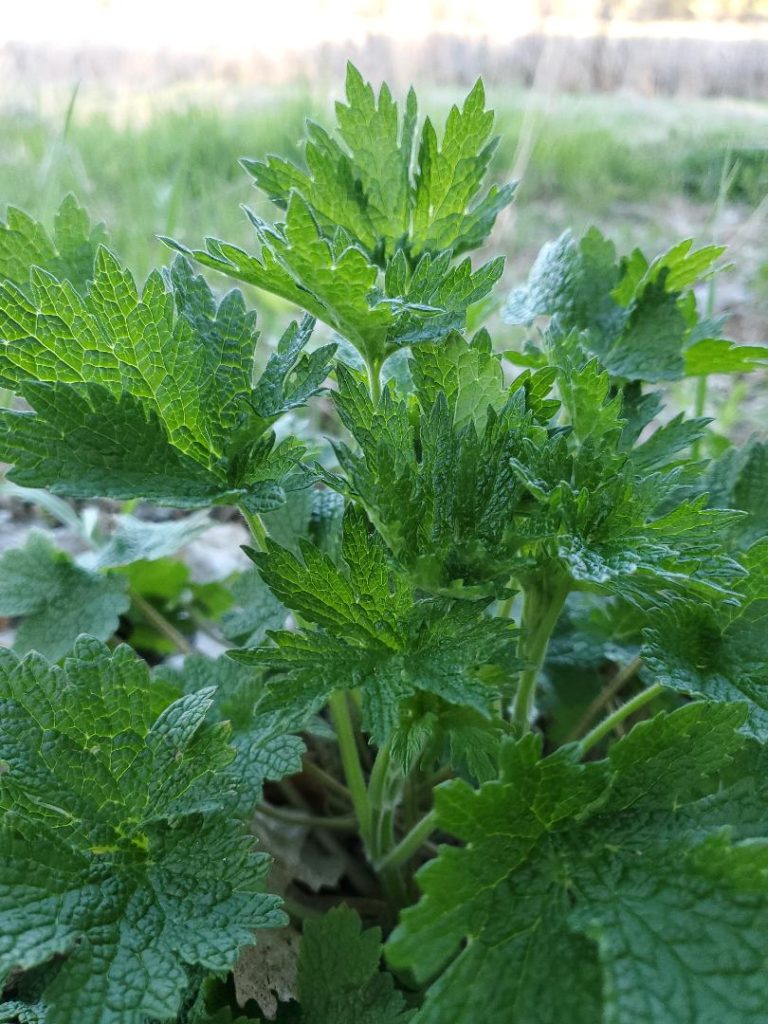
This herb is also good for the nervous system in helping calm and relax, especially in stressful situations. Motherwort seems to help alleviate tension and irritability.
There is no better Herb to drive Melancholly Vapors from the Heart, to strengthen it, and make a merry cheerful blith soul.
Nicholas Culpeper, The English Physician – 1652
Culpepper also classified motherwort among the “loosening medicines,” i.e. those “having a relaxant effect on muscles, tendons, ligaments, and membranes…”
From the name, we know that motherwort is also the herb for women. It helps with PMS, fertility, painful menstruation, hot flashes, lack of menses and delayed menstruation. By toning the uterus, it helps to prevent cramping.
**Do not use during pregnancy!
Motherwort also helps those in pain from MS, chronic fatigue, fibromyalgia and other nerve conditions.
It may also help with intermittent fever diseases such as typhoid, and respiratory ailments, such as bronchitis, asthma, coughing and wheezing.
This herb also supports the kidneys, digestion and helps with night sweats.
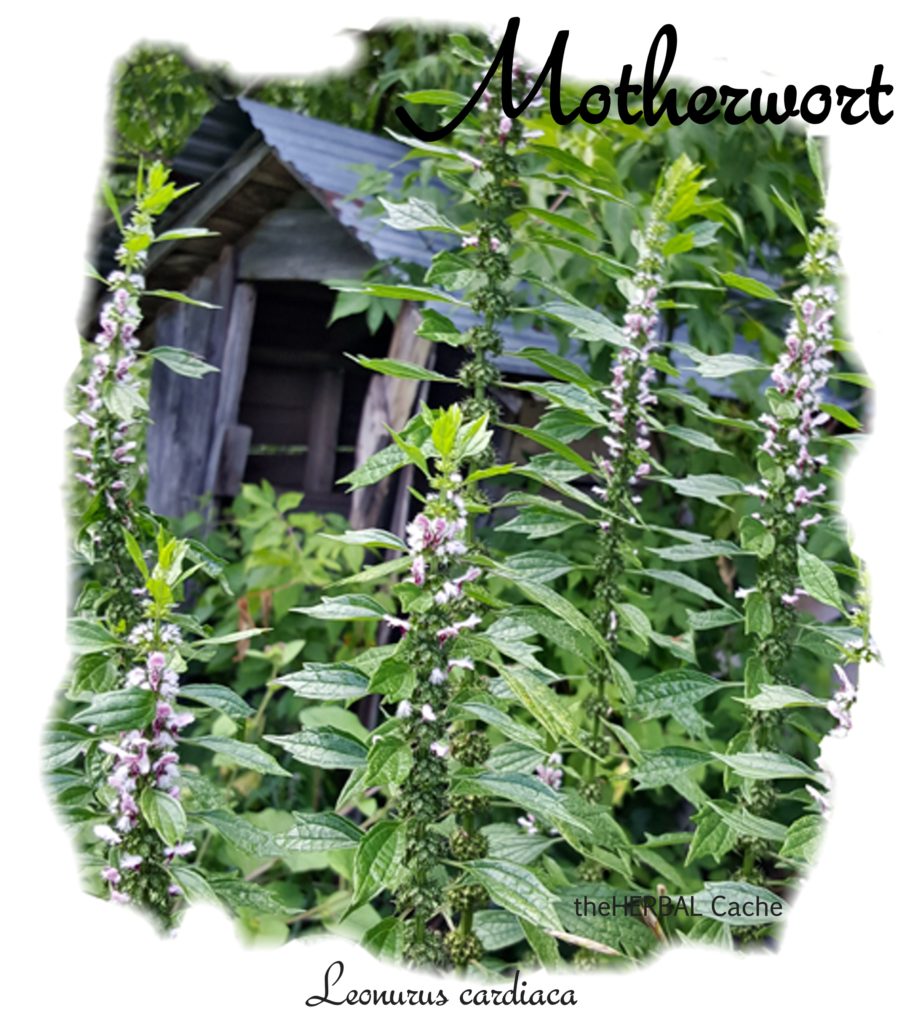
Robert Whelan says “I have come to develop a great deal of respect for how much Motherwort can shift a stuck pattern of tension in the heart or in the smooth tissue of the womb. I think that if it is used wisely for the right person it can be a profoundly relaxing and healing herb.”
“Statements herein have not been evaluated by the Food and Drug Administration, and are not intended to treat or diagnose any disease or health condition. It is also recommended that patients check with their doctors before taking herbs, to ensure that there are no contraindications with prescription medications.”
https://www.herbalremediesadvice.org/benefits-of-motherwort.html
https://rowanandsage.com/blog/2018/21/9/plant-profile-motherwort
https://www.wildnesswithinliving.com/blog/2016/7/22/motherwort
http://www.susunweed.com/herbal_ezine/July08/wisewoman.htm
http://www.susunweed.com/Article_Motherwort.htm
https://www.rebeccasherbs.com/pages/herb-article-br-motherwort
eclecticschoolofherbalmedicine.com/motherwort/